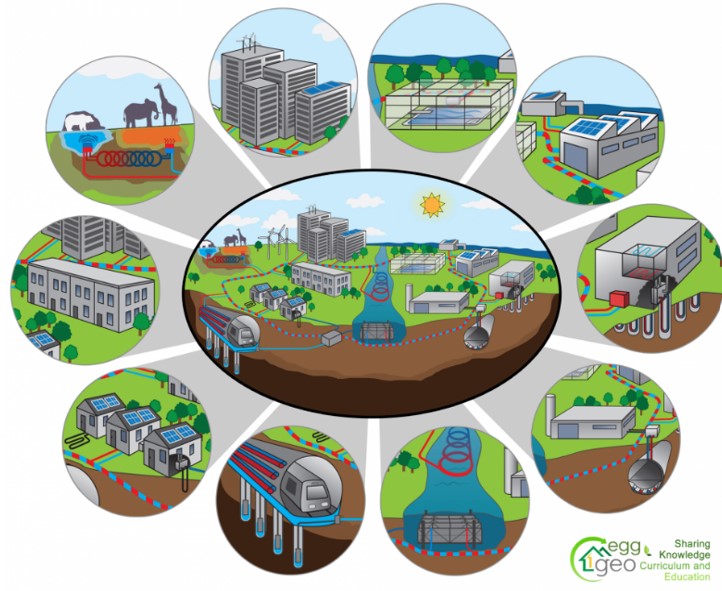- Definition and Types of Energy
- Myths And Misconceptions About Energy
- The Relationship Between Energy and Environment
- Climate Change and Carbon Footprint
- Greenhouse Gas Effect
- The Role of Human-Induced Greenhouse Gases and Energy Consumption
- Energy Efficiency and Sustainability
- Renewable Energy Sources and Future Perspectives
- Play and Learn
- Solar Energy Conversions
- Solar Energy Worldwide
- Solar Energy in Partner Countries
- Positive and Negative Impacts
- Technologies for Harnessing Solar Energy
- Solar thermal energy technologies and applications
- Electricity Generation Methods
- Passive Heating and Cooling of Residences with the Sun
- Concentrator solar power (CSP) systems and electricity generation
- Systems and Applications That Generate Electricity directly from solar rays
- Photovoltaic Cells and Panels
- Domestic PV Systems
- Off-Grid PV Systems
- Hybrid Connected Systems
- Materials Used in PV Cells
- Play and Learn
Types of Geothermal Energy Use
Geothermal energy usage areas are examined in two main groups:

Direct Use
- Central heating systems (city heating, greenhouse heating, residential heating)
- Thermal tourism (thermal springs, spa centers, health cure centers)
- Drying agricultural products
- Hot water fish farming
- Snow and ice melting (on roads and airports)
- Mineral and mineral production
Indirect Use
- Electrical energy production
The areas of use of geothermal energy vary depending on the temperature of the source. Today, geothermal resources are used worldwide for thermal tourism purposes. Thermal springs, spa centers, bath and swimming facilities are among the most common applications. In addition, geothermal energy is used to clear roads and airports of snow and ice in countries such as the USA, Switzerland, Japan, Iceland and Argentina. Geothermal resources are also used in agricultural production and industrial areas.